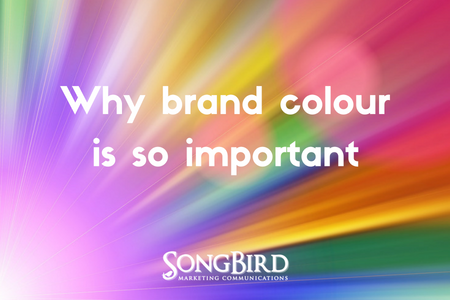Why brand colour is so important
Written by Walkiria Arndt
How do you want people to see your brand? One of the best ways to connect with your target audience is to tap into different emotions through your marketing and brand strategies. But what do you want people to feel? The best place to start is by figuring out what your brand personality is and then choosing a brand colour scheme that showcase that character.
Beyond making strong connections with your target audience, brand colour can have a strong psychological impact on consumer behavior. In the marketing world, colour is a key language that helps convey humour, emotion, and meaningful experiences between consumers and brands.
WHY IS THE PSYCHOLOGY OF COLOUR IMPORTANT IN MARKETING?
Colours are directly linked to the sense of sight and whether it is positive or negative, they stimulate the brain and prompt to an immediate reaction. Even though perceptions are individual, each colour tone has a broad meaning and can be applied in a general way.
According to Quick Sprout, brand colour plays a major factor in consumer purchase decisions – 85% of consumers say that it is the main reason. This means that using colours and graphics in a harmonious way is essential for your target audience to be able to identify with and be drawn to your brand and product offering.
WHAT DO COLOURS MEAN IN MARKETING?
Blue transmits calm, responsibility, and safety. It encourages trust when building relationships, especially in marketing. It evokes confidence and strength, and helps to increase productivity. Generally, companies involved in technology, science, communication, health, finance, government, or legal sectors use blue in their visual identities.
Yellow communicates an idea of joy, happiness, and optimism. This colour promotes feelings of clarity, energy, warmth, and inspiration. Yellow demonstrates clearness and caution and is great for highlighting important details. Due to its characteristics, it is widely used by food, entertainment, and construction companies.
Green is known as the most comfortable colour to be processed by the eyes. Green tones have a harmonizing effect. This colour expresses peace, growth, and health, and also offers a sense of renewal and self-control. Green is generally used by companies in science, tourism, medicine, human resources, as well as environment and sustainability fields.
Orange is a friendly and motivating colour and conveys a positive attitude and a general enthusiasm for life. It encourages sympathy, joy, trust, and socialization. Overall, orange is associated with happy, fun and friendly brands, making it perfect for e-commerce and entertainment companies.
Like SongBird, the purple colour shows creativity, wisdom, and imagination. It is often used to express courage, mystery, magic, loyalty, and luxury. It is an intense colour, with a powerful connotation and is widely used by communication, cosmetics and beauty, and food companies.
Red conveys excitement, youth, and courage. It increases enthusiasm, stimulates energy, and creates confidence. Red can portray sympathy and strength, but can also be demanding and demonstrate aggression depending on its context. Many brands prefer to combine red with soft colours such as white, yellow, or orange in order to produce a sense of excitement without changing the perception of their own business to something negative to the consumer. This colour is widely used by food, sports, automotive and entertainment companies.
Black and its derivative tones, such as gray and white, are generally associated with sophistication, elegance, power, stability, strength, formality, intelligence, and luxury. Black is an excellent colour for high contrast and is easy to read. This colour is widely used in the fashion, cosmetics, accessories, and technology industries to highlight unique and high-value products.
HOW TO USE COLOUR PSYCHOLOGY IN YOUR MARKETING
Choose a primary brand colour that works well with the others used.
Choose strong and solid colours that trigger consumer actions to your intended purpose.
Even when combining several colours, opt for a clean look.
Research to see how your customers are reacting, and from there, refine your colour choices.
Find a marketing agency that can help you improve the design of your brand.
Applying the right colours in your visual brand identity is essential. If your brand stands out with a great visual strategy, then any marketing tactic will be instantly recognized by your target audience. The right brand colour and tone can make a huge difference in how potential customers perceive your brand.
Now that you know the importance of the psychology of colour in marketing you can keep it in mind next time you wish to create a visual identity for a brand. And if you aren’t sure where to start when it comes to picking a brand colour, give us a call and we can get you pointed in the right direction.








